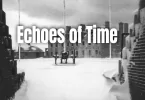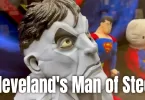The orphan train movement in America was a unique experiment in child welfare. Back in the mid-1800's, there were not a lot of options for poor, homeless, abused, and/or neglected children other than orphanages or almshouses. The issue of these types of children was especially noticeable in New York City, where there were estimates of over 30,000 children living on the streets in the 1850's. These children often lived in groups and were susceptible to disease and abuse from strangers. Many of them looked for ways to make a little money by selling match sticks, rags, and other small items. Others turned to crime. Police had no idea what to do with these children when they were caught stealing food or other items they needed to get by on the streets, so they put them in jail. While they were housed and fed in jail, they were also kept with the adult prisoners, which was not always a good situation for the children, especially since children as young as five years old were sometimes jailed with violent adult criminals.
Charles Loring Brace, a minister, and philanthropist thought there should be a better way for these children. He did not believe the orphanages and almshouses did them any good, as they received no education or job training there, and only learned to depend on charity to get the things they needed. He wanted to teach these children how to work and earn a living on their own while giving them good homes, so they could be independent as adults. These beliefs led him to start the Orphan Train movement.
With the Orphan Trains, street children abused and neglected children, and orphans were taken from wherever they were residing in New York City, and placed on trains to the West. Brace believed the pioneers in the West could use extra children to help on the farms. The children were to be treated just as any other child in the family, and older children were to receive wages for the work they did while living with their new family. Employees of his Children's Aid Society, which operated the orphan trains, were to periodically check in on the children to make sure they were being treated well by the people who took them in. If they weren't, they could be moved to new families.
While there were times that a placement didn't work out, the program was by and large successful. Most of the approximately 200,000 children who were sent away on an Orphan Train between 1853 and 1929 grew up to do well for themselves. There were even a couple of future governors among the Orphan Train children. The program only stopped when it did because of the onset of the Great Depression, when having an extra child was just not feasible for most families, and when more organized and better run state care options, like group homes and foster care, were available to needy children, not just in NYC, but in every state.
There were some critics of the program, of course. The main criticism was that children were placed with families in situations that resembled slave auctions. While the children weren't being bought, and indentured servitude was forbidden for the families taking these children, the arrival of each trainload of children was advertised, and local people encouraged to gather at a large meeting place to see the available children. They would examine the children for physical strength and endurance that were appropriate for farm work, sometimes even looking at their teeth. Siblings who went on trains together may be chosen by different families. And, while there was a nominal vetting process for families at first, it wasn't really kept up, nor was the process of checking in on the children once they were placed. Some children were abused by the families who took them in, some were treated like slaves, and not every child got the education and job training they were promised. Some children ran away, either because of abuse or because farm life was too different from what they were used to in the city.
In spite of some issues with the program, the Orphan Trains were, by and large, a success, and the children who traveled on them benefited from the new lives they were given. There are some Orphan Train children still alive today, from the later days of the program, and they can tell the true stories of the Orphan Train experience. As for Brace, he is now considered the father of modern foster care.




